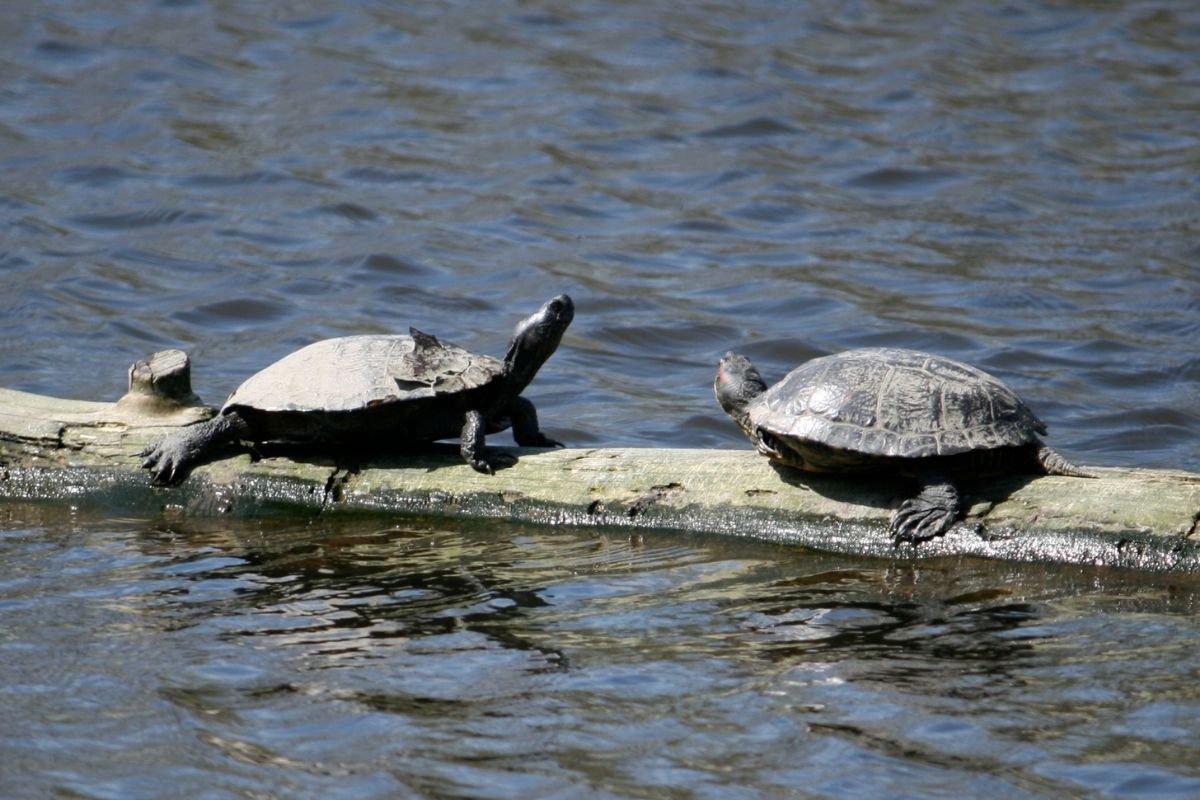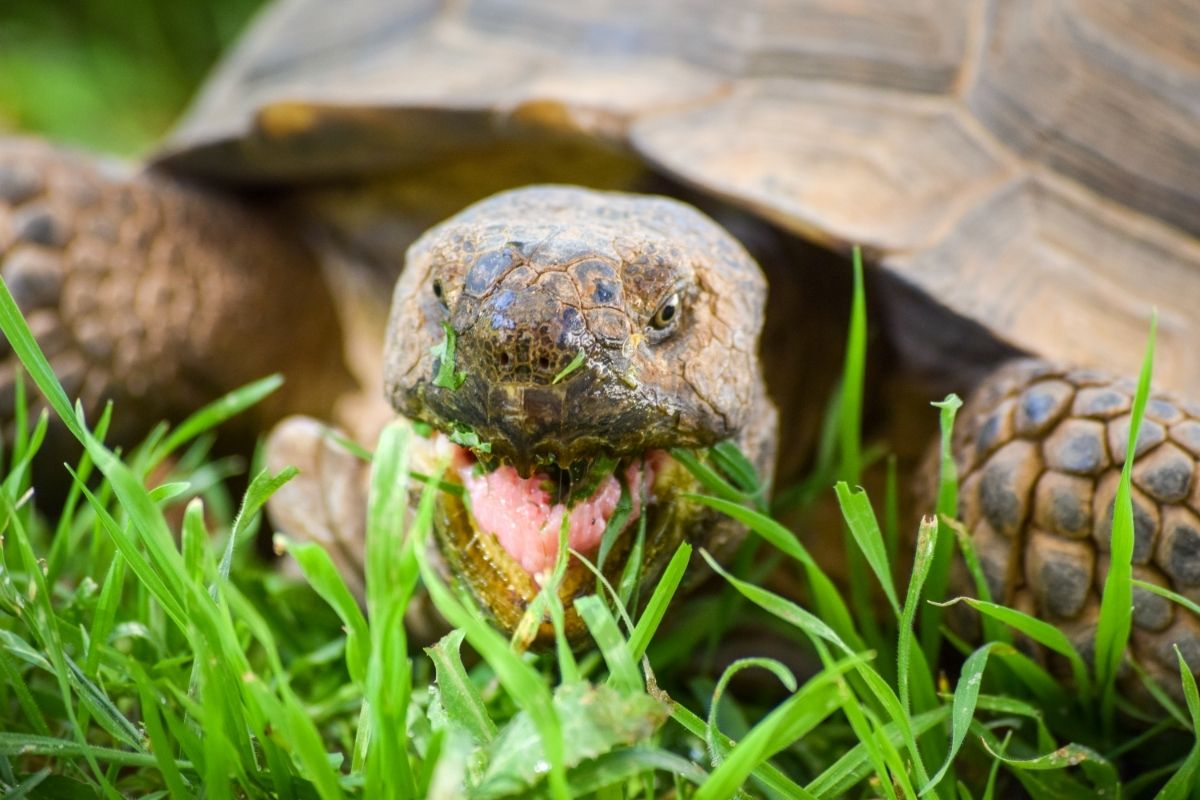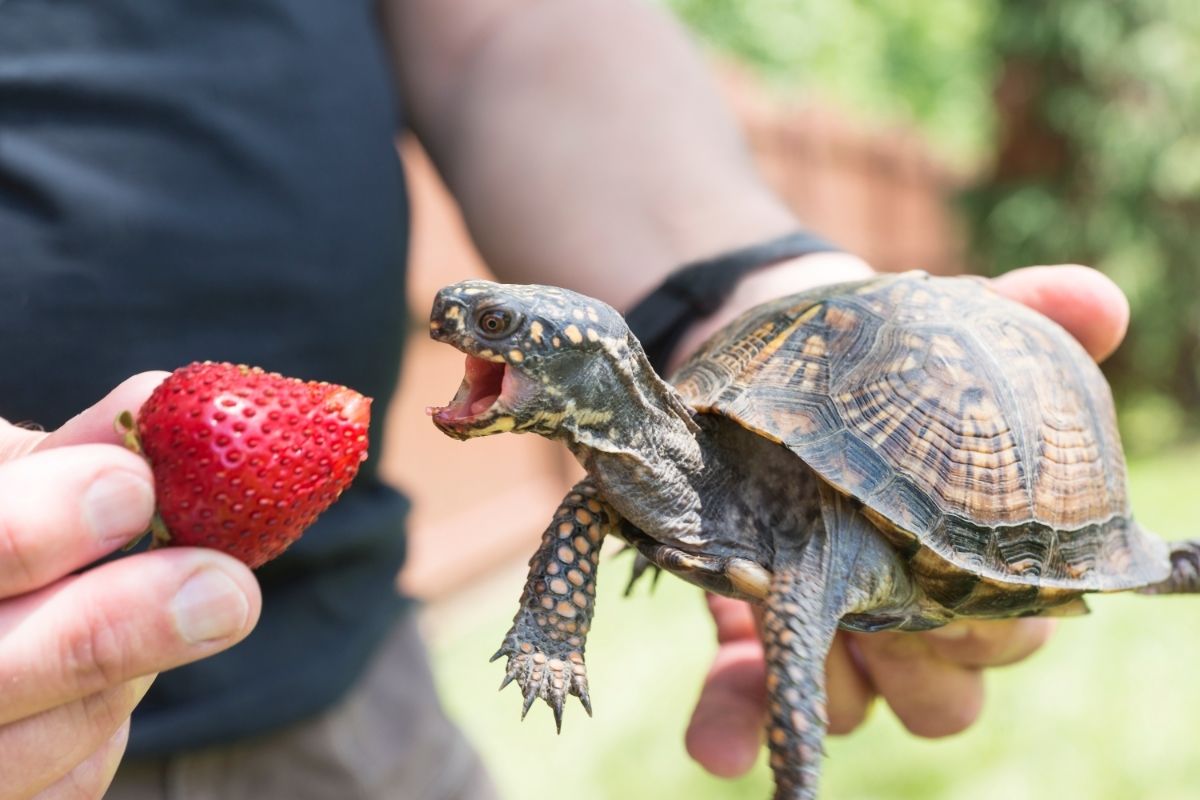Turtles are reptiles belonging to the order of Testudines. They are found throughout the world in freshwater habitats.

There are in excess of 300 species of turtles, which vary greatly in size and appearance. Turtles are known for their slow pace and peaceful nature.
However, if you have two pet turtles in the same enclosure, you might be concerned that they will bite each other.
Do Turtles Bite Each Other?
Yes, turtles sometimes do bite one another. This is a natural behavior, and it can happen at any time.
It’s not uncommon for them to fight over territory or food. If your turtle has been aggressive towards its cage mate, then this could explain why he or she bites.
Interestingly, it is rare to see turtles biting in their natural environment.
In fact, most turtles only bite when they feel threatened or when they are defending themselves from predators. The reason for this is that most turtles prefer their own company.
As a result, they do not tend to be seen around other turtles. Consequently, biting only tends to occur during captivity.
Why Do They Do This?

There are several reasons why turtles bite. The main reason is territoriality. When two or more turtles meet, they often engage in a fight to establish dominance.
If a terrestrial turtle bites its opponent, it could be trying to show submission. This behavior is called nipping. This often occurs if two male turtles are placed in the same enclosure.
Moreover, biting may occur when turtles are mating. During courtship, the males will nibble on a female turtle in an attempt to determine whether she is receptive.
Unlike the previous example, this bite is not intended to be violent. Instead, it will be more of a gentle nibble. If you notice biting during mating season, this is likely why it is occurring.
An alternative reason for this behavior is aggression. Some turtles exhibit aggressive behaviors toward others.
For instance, some turtles may attack a human hand that enters their tank. In these cases, the turtle is trying to protect itself from harm.
Though turtle bites can hurt, they shouldn’t be too serious. After all, their bites are not venomous. The turtle may also bite a rival turtle if it has an aggressive personality.
On the other hand, turtle bites could be a sign of starvation. A hungry turtle will nibble on anything within reach. This includes objects such as plants, toys, and even other turtles.
Baby turtles can be preyed upon by larger adult turtles. If you think this is the reason why biting is happening, it can be easy to prevent. After all, you merely need to give your turtles more food.
How To Stop Turtles Biting Each Other
Separate Your Turtles
One method of preventing your pet turtle from biting another pet is to separate it. You should place your turtles into different enclosures so that they don’t come into contact with one another.
However, this is not a very cost-effective technique, as you will have to purchase two separate enclosures.
Another way to stop a turtle from biting is to provide adequate space between its enclosure and that of its neighbor. This will ensure that they are less likely to attack each other. As solitary creatures, turtles prefer their own space.
This may require you to purchase a larger enclosure. Though this is also expensive, it may be more effective than buying two separate turtle homes.
You can even sell your old enclosure to ensure that you do not lose too much money.
It is particularly important to separate different species of turtle. For instance, if you have a red-eared slider and a green sea turtle, you should keep them apart.
These animals are known to be extremely aggressive toward one another. Therefore, you must make sure that they never come into contact with one another. Provide them with separate habitats to eliminate biting.
Give Them More Food

As mentioned earlier, providing larger food portions is the perfect way to stop hungry turtles from biting each other.
The good news is that turtles have a diverse diet. You don’t have to worry about feeding them something harmful. It also means that you don’t need to spend loads of money on expensive turtle food.
Many different types of foods are safe for turtles. These include vegetables, fruits, fish, and seaweed. If you are unsure how much food you should give your turtle, you should research it based on the specific species.
This is because they will have different needs. In addition, you should take the age of the turtle into consideration. A baby turtle will need to eat much less than an adult turtle.
Provide A Positive Environment
Furthermore, if you make an enclosure as comfortable as possible for your pet turtle, violent biting is far less likely to happen.
This includes providing plenty of hiding places and nesting materials. Your pet turtle will feel more secure if there are no sharp edges or rough surfaces around it.
Also, you should avoid using any type of plastic or metal that may cause discomfort.
You should ensure that your home is a relaxing environment. Make sure that there are no loud noises or sudden movements.
This could be making your turtles anxious, causing them to lash out. Therefore, keep noise to a minimum.
Moreover, ensure that your home is the perfect temperature for your shelled pets. This can include utilizing a heat lamp.
Turtles need these lamps because they cannot regulate their body temperatures. Therefore, you should always check that your home is properly heated.
If not, invest in one of these UV lamps. They will guarantee that your turtle is strong and healthy.
If you want to create a serene environment for your pets, you can decorate it with some foliage. This can be fake or real, depending on your preference.
You can also fill it with hideouts. Most turtles love exploring these hideouts, which are designed to be reminiscent of their natural habitat. You can either make your own hideout or construct your own.
Avoid Petting
If you are concerned about the turtle biting you or a member of your family, then you should avoid petting them. Instead, use a soft towel to clean them up.
This will help reduce the risk of injury. Perhaps you should wait until your turtle feels more comfortable before attempting to pick it up.
When handling your turtle, ensure that you are holding it correctly. For example, you must never pick up a turtle by its tail. This can damage it, hurting the turtle and causing it to become more aggressive toward you.
Instead, you should pick the turtle up with both hands. Hold the pet with a hand on either side of its shell. If you use only one hand, your turtle is more likely to break free. As a result, it could fall to the ground and be injured.
Mating Problems
If a male and a female turtle are biting during mating season, there is not much you can do about this. You shouldn’t be overly worried, as mating is perfectly normal.
Plus, these bites will not harm the turtles. If you want to stop your turtles from mating, you may need to isolate them. However, this is only temporary. Once the season is over, you can let them be in the same enclosure again.
Take Them To The Vet
However, if you notice that your turtles are constantly fighting, you should seek professional help. A qualified veterinarian will be able to identify the problem and give you advice based on your specific turtle species.
Create Walls
If you don’t want to drop the cash on a brand-new enclosure, you can instead alter your current one.
Using various objects, such as cardboard, you can construct walls for your turtles. This is great because you won’t have to buy anything.
Plus, you won’t have to worry about spending too much time building it.
These walls will enable you to separate turtles, thus giving them their own space. This is aseptically useful if you have two male turtles, as they tend to be the most territorial.
Frequently Asked Questions
Why Does My Turtle Become Aggressive?
The reason why your turtle may suddenly become aggressive is due to stress. Stressful situations can trigger aggression in animals. Consequently, your turtle will respond to this stress with violence.
The best thing you can do is to provide them with a safe place where they can relax. In addition, you should also try to reduce their anxiety levels by ensuring that the environment is calm and quiet.
How Can I Prevent My Turtle From Biting Me Or Another Member Of My Family?
You should avoid picking up your turtle when it is angry. Instead, you should gently rub its back using a soft towel. This will help soothe the animal.
Moreover, you should never touch their mouth. It could cause serious injuries.
Watch your children or other family members when they are handling the turtle. If you begin to notice any signs of stress or aggression, separate the family member from the turtle.
If you are concerned about the turtle biting you, wear gloves when you handle them. This will provide your skin with an additional layer of protection.
After handling your turtle, be sure to wash your hands. If you have young children, you may need to help them do this.
What Should I Do When My Turtle Is Mating?
You should keep your turtle separated from other turtles during mating season.
This way, you can prevent any physical fights. Also, make sure that your turtle has enough room to move around.
As mentioned before, you should also ensure that the environment is calm. The mating season can differ, but it tends to occur between spring and autumn.
This is quite a long time to keep turtles separate, so you should consider investing in small but separate enclosures.
Final Thoughts
Turtles are very intelligent creatures. They can communicate through various methods, including facial expressions and vocalizations. As such, they are capable of expressing themselves in many ways.
Therefore, you shouldn’t be surprised when they bite each other. Essentially, this is another form of communication.
However, you can prevent this behavior by ensuring that your home provides all the necessary conditions for your pet. With any luck, this guide will enable you to identify and prevent the problem.
